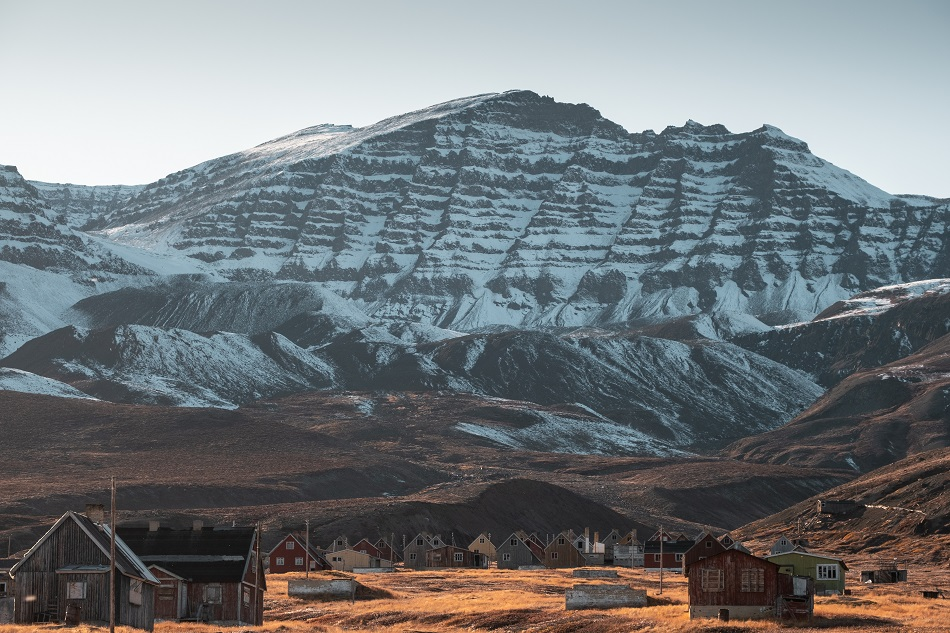
Image Credit: Ulannaq Ingemann/Shutterstock.com
Greenland is an island country located in the northern part of the North American continent between the Arctic Ocean and the North Atlantic Ocean. It is the 12th largest country in the world with a total area of 2,166,086 km2, and a small population of 57,691 as of July 2018, making it the 206th largest country by population. Roughly 80% of the land is ice-capped and the country experiences extreme arctic to subarctic climatic conditions.
Greenland was under colonial rule for a long time and the country gained greater control over its internal affairs when the Self-Government Act was made into law in June 2009. However, Denmark continues to have command over Greenland's security, foreign affairs, and financial policy and remains its largest trading partner.
Economy and Resources Overview
Income from mineral exploration and extraction is responsible for a notable percentage of Greenland’s economy. Greenland’s economy contracted between 2012 and 2014 but grew by 1.7% in 2015 and in 2016 it had expanded by 7.7%. The country’s GDP in 2015 was $2.413 billion. Increased hydrocarbon and mineral exploration and extraction operations helped the country overcome the economic slump.
Greenland has many rich mineral and natural resources including hydrocarbons, lead, iron ore, zinc, rare earth metals, gold, precious gemstones including diamonds, platinum, and uranium. Geological surveys and studies indicate the possibility of oil and gas fields in the northern and north-eastern parts of the country.
Industrial Minerals and Gemstones
Surveys have shown that Greenland has abundant gemstone resources. These include deposits of diamond, quartz, lapis lazuli, ruby, peridot, topaz, sapphire, tugtupite, and amazinite. Most of the ruby and sapphire deposits are found on the southwest coast near the village of Fiskenaesset/Qegertarsuatiaat. These total 31 occurrences. A potential mining operation is being developed at the Aappaluttog occurrence. Also, from samples obtained from the Fiskenaesset complex, small aggregates of minerals, most likely zircon, but possibly anorthite, have been observed.
Diamond explorations in Greenland are handled exclusively by companies such as NunaMinerals and The True North Gems Inc. NunaMinerals has spotted new exploration targets for diamond at Kimberlite and Qaamasoq dikes at Tikiusaaq. The True North Gems Inc. has been involved in the Fiskenaesset ruby project on the southwestern coastal regions of the country and has declared an estimated ruby resource of about 296 million carats. From a 30t sample, single pink sapphire was valued at $460 per carat and single ruby was valued at $3,220 per carat.
Metals
Greenland has abundant metal resources including gold, platinum, zinc, and iron ore.
The Skaergaard Project in Greenland is concentrating on this undeveloped gold and platinum deposit which is also a significant palladium resource, one of the largest outside of Russia and South Africa, with vanadium and magnetite making up a proportion of metal by-products from the deposit. Currently, Platina Resources Ltd, who owns 100% of the project, with backing from international partners, has completed an internal scoping study on the project showing promise for significant financial returns from mining and drilling operations.
A recent update from AEX Inc. on their mining operations in the region including their Nalunak mine has shown high-grade mineralization at key targets. This shows the potential for further discoveries in south Greenland for the coming years.
Fossil Fuels
In 2001, a survey by the US Geological Survey found that the Greenland Sea could contain up to 110 billion barrels of oil. However, drilling and transporting natural gas and petroleum has proved an expensive and risky task. Additional costs due to melting ice flooding the existing land is also a major challenge in these areas.
In 2001, a survey by the US Geological Survey found that the Greenland Sea could contain up to 110 billion barrels of oil.
The government of Greenland has awarded licenses for exploration and exploitation of natural gas and petroleum in Baffin Bay to the following companies:
- A.P. Maersk Oil AP and DON G Energy ASA of Denmark
- NunaOil A/S of Greenland
- Cairn Energy plc. of UK
- GDF Suez S.A. of France
- Royal Dutch Shell plc of the Netherlands
- Statoil ASA of Norway
- ConocoPhillips Corp. of USA
- Recently, Greenland has lifted its decades-old ban on mining of uraniums. Experts believe that uranium will provide a significant revenue stream due to vast uranium reserves. An Australian-based company became the first to be granted permission to include radioactive elements in its exploration phase.
Investment
Greenland is considered one of the last frontiers for exploration by mining experts. Future development and control of the country’s natural resources are laid out in the framework of Greenland’s Mineral Resource Act, which stipulates that all activities must be carried out according to internationally agreed standards and must be authorized by the government of Greenland.
The stable political scenario and the government’s positive outlook towards the mining sector are likely to further enhance mineral development. Experts feel that this will also favor foreign investments, despite high operating costs and extreme climatic conditions.
Greenland certainly has caught the attention of the global mining industry and is expected to see better economic development in the coming years, thanks to its flourishing mining sector.
Sources and Further Reading
This article was updated on 3rd February, 2020.
Disclaimer: The views expressed here are those of the author expressed in their private capacity and do not necessarily represent the views of AZoM.com Limited T/A AZoNetwork the owner and operator of this website. This disclaimer forms part of the Terms and conditions of use of this website.